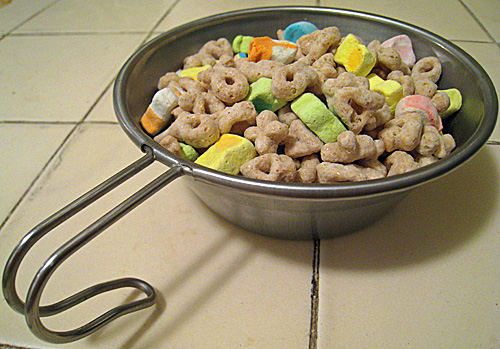Analog Development
2009-01-15
by Richard White

I’m a minimalist.
Seems like I’ve been “going light” for most of my life, or at least since I got turned on to backpacking, and started eating everything from cereal to steak out of one of those little Sierra cups that were all the rage back in the 70s. I don’t carry any consumer debt, I don’t check a bag (even flying transcontinental)… and you can still occasionally catch me eating Lucky Charms out of that little cup.
The ultralight ethos only got reinforced when I began preparing live in France for an extended period of time. Books, music, photos, lesson plans… everything got moved onto a 15-inch Titanium PowerBook, and it seems like I’ve been living out of a laptop ever since.
I’ve had lots of reasons for expending the time and energy it takes to transfer old-school paper-based lessons and lesson-plans into digital form. Part of it has to do with the ease of transferring information from one year to the next. I look at some of those “Course Planners” that I used to plan the year with, and remember how I’d painstakingly transfer one year’s schedule into another planner for the following school year (writing in pencil, in anticipation of the inevitable changes that would necessitate last-minute adjustments). I had two large 3-inch binders, one for each semester, in which I’d keep detailed lesson plans, copies of handouts, lab activities, tests, test keys.
It’s all a bit overwhelming when I think back on it now.
I’m reminded, though, of how important those pen-and-paper, “analog” lessons were, now that I’m in the process of developing a new course. You can get all sorts of “planning in analog” advice, from everyone from Nancy Duarte to Garr Reynolds, and they’re right.
There are lots of reasons why it’s good to plan with a pencil and pen. Making diagrams and sketches is almost always easier on paper. Collaborators can easily add to your work (as long as they’re in the same room). Paper is easily transported, and multiple pieces of paper can be easily spread out for examination.
For me, it’s mostly a simple question of real estate. I’ve got a two different calendars that I’m working with, a lesson plan for the day, a textbook propped open—and yes, the laptop opened up—and that allows me to organize the disparate elements of the course and assemble them into something more-or-less cohesive, in a way that clicking back-and-forth among eleven open windows on the tiny screen simply doesn’t allow for.
Imagine me and the Sierra cup, a 10-oz steak flopping over the sides, and sauteed mushrooms dropping onto the ground while friend, fellow backpacker, and chef for the evening Brian laughs hysterically.
The final product for the course I’m working on (a computer science course) will include a website, the lessons (in PowerPoint form), a series of assessments, and a whole lot of code examples and programming assignments, and all of it will eventually live on the laptop.
For now, though, I’m enjoying the paper. The notes. The ballpoint pen. The mess.
It’s all part of the process.